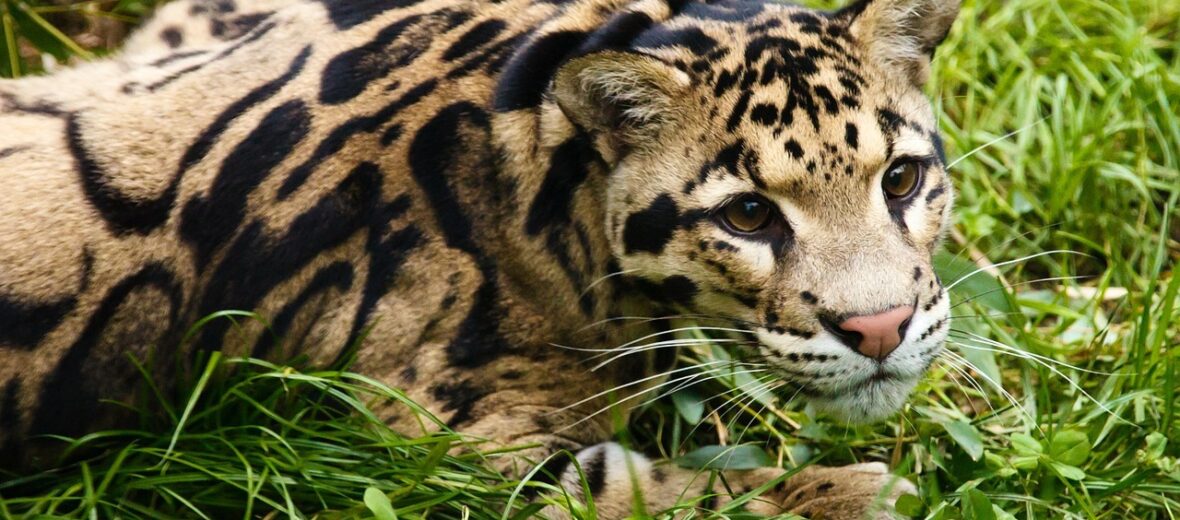
There are but a few people who can actually say they have seen a clouded leopard in its natural habitat. They are as secretive and elusive as they are beautiful. These cats are a separate genus of cat that are most closely related to snow leopards. Equipped with large agile paws with specialized foot pads they easily traverse their forest environment. Clouded leopards can even climb down trees head first. Another unique feature of these amazing felines are their extra long canine teeth. They are longer, in relation to their heads, than any other cat. Sadly, due to poaching for their beautiful fur coats, they are listed as Vulnerable by the IUCN and their numbers are decreasing!
First the Stats…
Scientific name: Neofelis nebulosa
Weight: Up to 51 lbs.
Length: Up to 2.7+ feet, plus a 2+ foot long tail
Lifespan: Up to 15 years
Now on to the Facts!
1.) Clouded leopards take up residence in lowland tropical rainforests, secondary forests, and dry woodlands.
2.) They have been seen at elevations of up to 9,000 feet!
3.) These nimble cats are arboreal (spend most of their time in trees).
4.) Cloudies are nocturnal (active at night).
5.) The clouded leopard doesn’t purr, due to the lack of a fully ossified hyoid bone, but rather they make a quiet snorting noise called prusten. They have also been recorded emitting low, moaning roars, hisses, growls, soft chuffles, and a meowing sound.
But wait, there’s more on the clouded leopard!
6.) Not only are they agile tree climbers but they are skilled swimmers as well.
7.) They are, like most cats, solitary except during mating season.
Did you know…?
Due to habitat destruction at the hands of logging, most of the remaining forest areas are far too small to guarantee the long-term survival of clouded leopard populations. This means inbreeding and the health issues that follow.
8.) These skilled hunters prey on birds, monkeys, squirrels, deer, wild boars, and wild pigs.
9.) Females birth between 1 – 5 cubs per litter.
10.) Breeding season lasts throughout the year in the wild but is limited to between December – March, in captivity.
Now a Short Clouded Leopard Video!
Want to suggest a critter for me to write about? Let me know here.




Leave a Reply